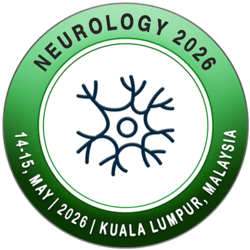
Chia Wei Lin
China Medical University Hospital, TaiwanPresentation Title:
Determinants of intravenous thrombolysis dose selection and clinical outcomes in acute ischemic stroke: A real-world registry study
Abstract
Background: The optimal intravenous tissue plasminogen activator (tPA) dose for acute ischemic stroke (AIS) in Asian populations remains uncertain. In Taiwan, physicians often tailor dosing according to patient characteristics. This study aimed to explore factors influencing tPA dose selection and to compare outcomes across different dose levels.
Methods: We retrospectively analyzed 419 Taiwanese patients with AIS who received intravenous tPA at a tertiary medical center between January 2017 and June 2022. Baseline demographics, comorbidities, and initial National Institutes of Health Stroke Scale (NIHSS) scores were collected. Patients were divided into three dose groups: Low (0.46–0.64 mg/kg), Medium (0.67–0.84 mg/kg), and Standard (0.85–0.94 mg/kg). Statistical analyses compared clinical characteristics and outcomes, including hemorrhagic transformation (HT), symptomatic intracranial hemorrhage (sICH), and 3-month modified Rankin Scale (mRS).
Results: Older patients and those with diabetes mellitus or valvular heart disease were more likely to receive lower tPA doses. The incidences of HT and sICH, as well as the change in NIHSS at 24 hours, showed no significant differences among groups. However, 3-month good functional outcomes (mRS 0–2) differed significantly: 68.3% in the standard-dose, 52.8% in the medium-dose, and 44.6% in the low-dose groups (p < 0.001).
Conclusions: Clinicians in Taiwan appear to adjust tPA dosing according to patient risk profiles. Despite similar short-term safety and neurological improvement, patients receiving standard-dose tPA achieved better 3-month functional outcomes. Further prospective studies are needed to validate these findings.
Biography
Chia-Wei Lin is an attending physician at the Department of Emergency Medicine, China Medical University Hospital, a tertiary medical center in Taichung, Taiwan. He also serves as a committee member of the hospital’s Stroke Center, where he is responsible for coordinating acute and post-emergency stroke management. He is passionate about stroke-related research and data analysis of in-hospital stroke patients. He has published several articles focusing on emergency medicine and cerebrovascular diseases.


